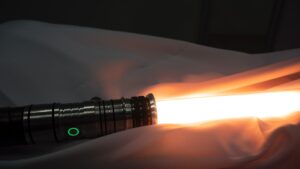A well-timed battery metals spin-off is about to hit the ASX

Pic: Schroptschop / E+ via Getty Images
A spin-off battery minerals company with ground potentially sitting above the same lithium-rich brine aquifers as Orocobre’s Olaroz lithium carbonate project in Argentina will soon hit the ASX – and it’s hard to imagine a better-timed listing.
Lithium Energy (to be ASX:LEL) – will be spun out from the project book of iron ore-focused Strike Resources (ASX:SRK), with a $9 million IPO raise in the bank which will allow it to hit the ground running.
LEL will list with Solaroz, the lithium brines project immediately adjacent to Orocobre’s Argentinian flagship, and the Burke graphite project in Queensland on its books.
They’re projects of great potential which took a back seat at Strike as it worked towards the development of its Paulsens East iron ore project in WA’s Pilbara and the Apurimac iron ore project in Peru.
“We’ve been iron ore focused since we listed in the early 2000s, but around 2014-2015 the iron ore price went pretty low and we made the decision to diversify,” Strike managing director William Johnson told Stockhead.
“We were attracted to battery metals, so we had a good look around and from that picked up these projects. Since then, the iron ore market has recovered, and we felt it was better from the corporate perspective to separate our battery minerals assets from our iron ore assets so Strike could keep its focus on iron ore.”

Why is the timing right?
Spinning off the battery minerals assets into Lithium Energy will make the projects a priority in their own right, at a time when electric vehicles are widely predicted to take hold of global automotive industry and continue to drive demand for battery components skyward.
In Q1 of 2021, hybrids and battery electric vehicles accounted for 32.2% of the European market, while at the end of March, UBS predicted lithium demand would soar a whopping 1100% to 4.4 million tonnes by 2030.
That UBS report also predicted natural graphite demand growth of 700% over the same period. That’s welcome news to a company listing with assets in those two commodity areas.
Then there’s the M&A activity. If you’ve been following the lithium market of late, you’ve probably heard the news of the Orocobre-Galaxy Resources merger announced mid-April.
That proposed merger will create the fifth-largest lithium chemicals company globally, with a diversified assets portfolio and a worth of $4 billion.
The Orocobre share price has traded at all-time highs since that announcement was made, with the company currently sitting pretty with a market capitalisation above $2.3 billion.
Orocobre’s key asset is the Olaroz lithium facility, where it produced at cash costs of US$3867 per tonne in the March quarter – among the lowest on the cost curve.
That asset’s evaporation ponds are actually visible from Lithium Energy’s 12,000-hectare Solaroz project, which sit adjacent to Orocobre’s tenements on the edge of the same lithium-rich brine lake.
The next step, according to Johnson, will be proving the same lithium-bearing aquifers which supply Orocobre’s operation extend under the Solaroz tenements.
“The potential from our perspective is if we can demonstrate in the exploration work that our land effectively sits above the same lithium brine-rich aquifers as Orocobre, then there’s no reason why we couldn’t progress towards building an operation of similar scale,” he said.
Lithium Energy plans to move quick once it has environmental approvals over Solaroz, with plans for geophysics to help with targeting, followed by drilling.
Its market cap on listing will be $16 million.
Don’t discount graphite
Lithium will be the immediate priority for Lithium Energy – it’s in the name, after all – but that’s not to say the Burke graphite project in Queensland will be put on the backburner.
There’s a few things this project has going for it, according to Johnson, including its location in a stable jurisdiction.
The project has a mineral resource, defined in late 2017, of 6.3 million tonnes at 16% total graphitic carbon for 1 million tonnes of contained graphite. Within that envelope there’s a higher-grade resource of 2.3Mt at 20.6% TGC for 464,000t of contained graphite at a 18% TGC cut-off.
Grades of that level are particularly high, which means graphite products could potentially be produced at significantly lower costs compared against other projects with lower grades.
Test-work carried out a few years ago with the CSIRO found the graphite material was potentially suitable for lithium-ion batteries – the critical component of the EV story, of course.
“We have a resource expansion area that we’re looking to drill to potentially expand the size of the resource at Burke, and there’s also a program of further test-work to be done to provide further insight into the opportunities for using this material in the EV battery space,” Johnson said.
Strike Resources will retain a 43% stake in Lithium Energy on listing, which is expected later this month.
At Stockhead, we tell it like it is. While Strike Resources is a Stockhead advertiser, it did not sponsor this article.

UNLOCK INSIGHTS
Discover the untold stories of emerging ASX stocks.
Daily news and expert analysis, it's free to subscribe.
By proceeding, you confirm you understand that we handle personal information in accordance with our Privacy Policy.








